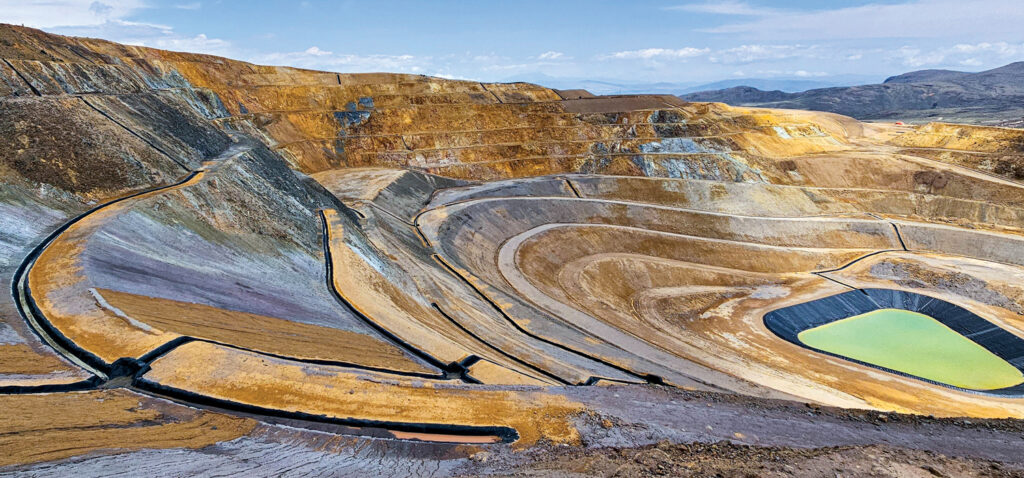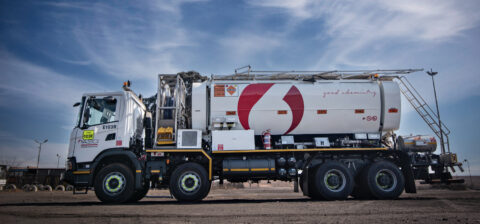SA Mining
Gender Diversity Is Key To Future-Proofing The Mining Sector
The key to future-proofing mining in Africa includes looking at the intersection of gender diversity, innovation, and the future sustainability of the industry. In contrast to 1994, which paved the way for the introduction of some key pieces of legislation, the mining industry has made some significant gains towards gender equity.
Notwithstanding these wins, there are still many barriers women face in entering and advancing in mining. One of the biggest is the deeply entrenched gender stereotypes that paint mining as a male-dominated field, both in terms of physical demands and societal expectations.
Many women are discouraged from pursuing careers in mining due to perceptions that they lack the physical strength or aptitude for the work.
According to Ntsiki Adonisi, head of natural resources and environment at ENS, breaking down these stereotypes is crucial, which is why gender sensitivity and awareness training should be implemented across the industry, to shift perceptions of what women can achieve in mining. Educational programmes that highlight successful women in mining can also inspire future generations to enter the field.
“As the global movement for women’s equality continues to gain momentum, there are also many pregnant and nursing female employees within male-dominated industries like mining, who still face significant economic hardship,” says Adonisi.
“While Section 26 of the Basic Conditions of Employment Act (BCEA) offers some protection for these employees, concerning gaps in the legislation continue to leave many without financial support during critical stages of pregnancy and post-natal care.”
In the mining industry, the risks associated with hazardous work environments compound the challenges for pregnant employees. Section 26 mandates that employers must ensure that pregnant or nursing women are not exposed to dangerous working conditions, she says.
Where this is not possible, they must offer alternative, suitable work. If an employer cannot offer suitable alternative employment, they are not entitled to remuneration until they commence maternity leave.
The earliest a pregnant employee may take maternity leave is four weeks before they give birth. Once an employee is on maternity leave, they are entitled to maternity leave benefits from the Unemployment Insurance Fund.
Making progress
“The mining industry, like many others, has made strides towards gender equality, but there is still much to be done to ensure that women working in high-risk environments are adequately protected.
“As the industry looks to future-proof itself with innovations and sustainability initiatives, it must also address the glaring gaps in its support systems for all women, including pregnant and nursing employees,” says Balindile Shezi, employment executive at law firm ENS.
“Despite this, it’s worth noting that over the past decade, the role of women in mining has evolved significantly, with more women entering the industry and taking on leadership roles, as recognition of the value of diversity and inclusion has spurred positive change.”
One of the most notable areas of progress Shezi points to is the promotion of gender diversity within senior leadership and decision-making roles. More women are now heading mining companies, serving as executives, and taking up roles in boardrooms.
Increasingly, they are also playing a more prominent role in technical fields, ranging from geology and engineering to health and safety management.
“In terms of ‘future-proofing’ the mining sector, there is a growing emphasis on attracting and retaining women by creating an inclusive and supportive work environment.
“This includes the introduction of gender-sensitive policies, mentoring programmes, and initiatives aimed at developing women’s skills in technical and leadership capacities,” she says.
“The future of mining lies in innovation, sustainability, and adaptability. As mining companies shift towards more sustainable and technologically advanced practices, there is more room for women to bring fresh perspectives and contribute to the sector’s future growth.”
Progress in areas such as automation, data science, and green mining initiatives is opening up new opportunities for women in mining. Furthermore, increasing corporate responsibility and the drive for greater community engagement means that more women are assuming leadership roles in driving these transformations.
Women and the law
Diversity is equally important in the legal arena, says Adonisi, noting that it is important to bring a variety of legal expertise to the table when assisting a mining client with a challenge.
This is because the mining industry operates within a complex environment comprising legal, regulatory, environmental, and social considerations.
A multidisciplinary team ensures that all facets of the challenge are addressed, making it easier to develop holistic and practical solutions.
“Mining challenges often involve overlapping areas such as corporate law, environmental compliance, labour regulations, tax implications, and community relations. A team with diverse legal expertise can comprehensively analyse these interrelated issues, ensuring that no critical aspect is overlooked.
“A well-rounded legal team helps clients make informed decisions by presenting integrated advice that accounts for all potential implications whether that involves legal, financial, or reputational risk. This avoids the need for back-and-forth consultations with multiple external experts, saving time and resources.”
Adonisi and her team indicate that the ENS team has extensive experience in handling a wide range of mining and minerals transactions across Africa. This includes exploration, mergers and acquisitions, mine development, mineral royalty, mining regulation, project finance, resource finance, and restructuring, alongside expertise in mine health and safety.
“Our value lies in our comprehensive understanding of both the technical aspects of mining – such as geology and engineering – and the commercial, regulatory, and geopolitical factors that shape the industry. This combined knowledge enables us to provide well-rounded and informed legal guidance to our clients.”
Beyond solving immediate challenges, she says, a multidisciplinary approach helps clients future-proof their operations.
“For example, tax lawyers can optimise financial strategies, while environmental lawyers can ensure sustainability practices align with global standards, thereby enhancing the company’s long-term viability,” says Adonisi.
In summary, ENS believes that a multidisciplinary team enhances efficiency, creativity, and foresight in addressing mining challenges. By leveraging diverse legal expertise, the client benefits from well-rounded, effective solutions that address both immediate issues and long-term goals.
Diversity and sustainability
“As is the nature of the mining industry, there are still significant health and safety risks, and this is particularly true for women working in hazardous environments,” says Shezi.
Ensuring that the workplace is safe for women – including providing adequate maternity leave and pre-birth UIF benefits, addressing issues like sexual harassment, and implementing gender-sensitive policies – will be vital for both workforce retention and productivity, she says.
“Women in mining also often face barriers to accessing training and career development opportunities. Ensuring equal access to skills development, mentorship, and leadership programmes will help close the gender gap and foster a more inclusive and capable workforce.”
Another key aspect of future-proofing mining involves adopting green technologies, improving environmental stewardship, and reducing the sector’s carbon footprint, all while ensuring that women play an active role in these efforts. This is especially vital as the pressure to adopt more sustainable practices grows.
“With constantly evolving regulatory frameworks, mining companies need to stay ahead of ESG, labour, and gender-related legislation. Ensuring compliance with policies that promote gender equality and environmental sustainability, while navigating political and economic uncertainties, will be a key issue for the mining sector moving forward,” says Shezi.







 Sign-up and receive the Business Media MAGS newsletter OR SA Mining newsletter straight to your inbox.
Sign-up and receive the Business Media MAGS newsletter OR SA Mining newsletter straight to your inbox.